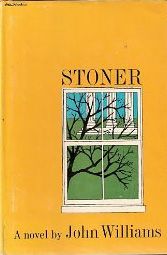
Aladdin, directed by Guy Ritchie, 2019
More out of lockdown boredom than genuine interest, I decided to watch the live-action remake of Aladdin which it turns out was directed by Guy Ritchie. Like the 1992 cartoon, the film follows the story of Aladdin, a street urchin who activates a magic lamp, releasing a genie (played by Will Smith) and makes a wish to become a prince himself so as to get close to Princess Jasmine. The film is one of Disney’s remakes of their own animated films- a tested story formula with updated special effects. It should be the top-of-the-line of CGI in live action film, and by and large it succeeds, especially anything to do with the genie, whose scope for imaginative play is unlimited. But where the film falls short is where they try to do the basics. Simple set ups like over-the-shoulder conversations feel very formulaic- they’re badly lit and stuffy, and look just like bad television with an enormous budget. Characters who aren’t technically magical, but who should be otherworldly, like Jafar, are strictly shot with no CGI, which makes it harder to see him as evil than in the 1992 animation where all the characters visages can be played with. I think they missed an opportunity here to make a truly great film, but it’s definitely worth watching for anything to do with the genie.
We Live in Public, directed by Ondi Timoner, 2009
This documentary follows Josh Harris, an early Internet pioneer who made a lot of money from his dot-com era company Pseudo.com and used much of it to fund controversial social experiments in the 1990s. Initially Harris is seen as a young genius in a burgeoning new field. Having correctly predicted several things to do with the internet’s impact on society, he becomes a god in the New York art-world and convinces many people to become involved in his strange projects. The most significant was one named “Quiet: We Live In Public” where over 100 artists moved into an underground capsule hotel-style space, and were constantly filming and performing for each other and then watching each other on their hundreds of television sets. This was Harris’ late-90s prediction about the future: that we would all want to be filmed all the time living our regular lives, a zany idea that arguably turned out to be correct. The doco itself also happens to be extremely fun: quick cuts, lots of colour, easy to digest.
Stoner, written by John Williams, 1965
This novel follows the life of John Stoner, a regular man, born on a Midwest farm, who ends up going to a local college as a student and then staying on to teach English for the rest of his life. Williams follows every chapter of Stoner’s life chronologically: his awkward student days, his early teaching ventures, his marriage to Edith, the birth of his daughter. Nothing remarkable happens to Stoner, and yet I couldn’t put this book down. This got me interested in what was making this book so good, and I think it comes down to the prose. It is a simply written book, but the settings and the characters are described so fully that the reader is covertly drawn in to a deep understanding of Stoner’s world. Originally written in 1965 and for a long time largely forgotten, rumour has it that a resurgence in Japan was the catalyst for Stoner’s 2000s republication in the West (the New Yorker in 2013 called it “The Greatest American Novel You’ve Never Heard Of”). This myth reminds me of the enduring power of a beautifully crafted piece of art.
About This Work
By Harry Hughes
Email Harry Hughes
Published On: 11/08/2020
